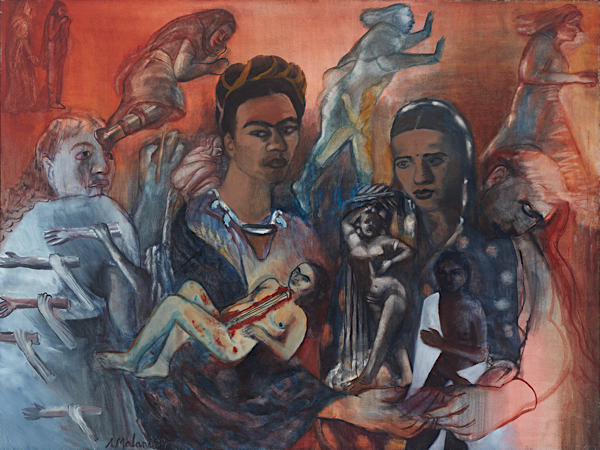
| ||||
| Level 300 | ||||
|
| ||||
| Level 400 | ||||
| ||||
| History of Art | ||||
| LS&A | ||||
| University of Michigan | ||||
| Back to the list of courses |
Special Topics: Modern and Contemporary Art from a Global Perspective

This course is a general introduction to modern and contemporary art from a global perspective, considering the terms and conditions through which modern art arose outside of Europe and America, although often in dialogue with modern and avant-garde art in Europe. And how the world system has changed under current conditions of globalization to decenter art markets across the world and allow for new forms of global citizenry and circulation of art.
While modern and also contemporary art are widely understood to be global the concepts demanded for this understanding are still very much works in progress. Not only that, a great deal of what is remarkable art remains too little known in America. This class will simultaneously explore the fascinating and variegated modern and contemporary art movements that have taken place across Mexico to South Africa, India, Australia and China, and the kind of concepts required to think modern and contemporary art in a truly globalized way. A central theme will be the way the culture of financial capital around globalization has changed the conduct of world art so that it is now less recognizably "post-colonial", less tied to the projects of nationalism, decolonization, the retrieval of the pre-colonial past in the name of new nations and peoples, the critique colonialism and race, and the question of exclusion from global markets. And more tied to global projects (around race, inequality, the environment, the culture of humanitarianism, the global media), to the synergy of globalized forms into new patterns, to the international character of markets and branding, to global politics and audiences.
Since modern art in much of the world arose in conversation with European modernism and the European avant-gardes the European story will be part of the class. However, it is also important to point to those traditional forms of carving (in southern Africa), painting (in Aboriginal Australia), etc. which have evolved organically, without any major influence from European modernism, and evolved to address modern life through their own traditional lenses and anxieties. It has been the fate of such traditions to face difficulties, fractures, loss of spirit and other ills when they enter the contemporary art world and thereby become "globalized". On the other hand the globalization of traditions can open up enormous opportunity. What is clear is that the system of globalization is hegemonic; its pressures close to irresistible. This leads to the broader question, that will sit centrally in the class, about the extent to which globalization of the arts creates new forms of inequality across regions.
HISTART concentration distributions: C. Asia, D. Europe and the US, 4. Modern and Contemporary